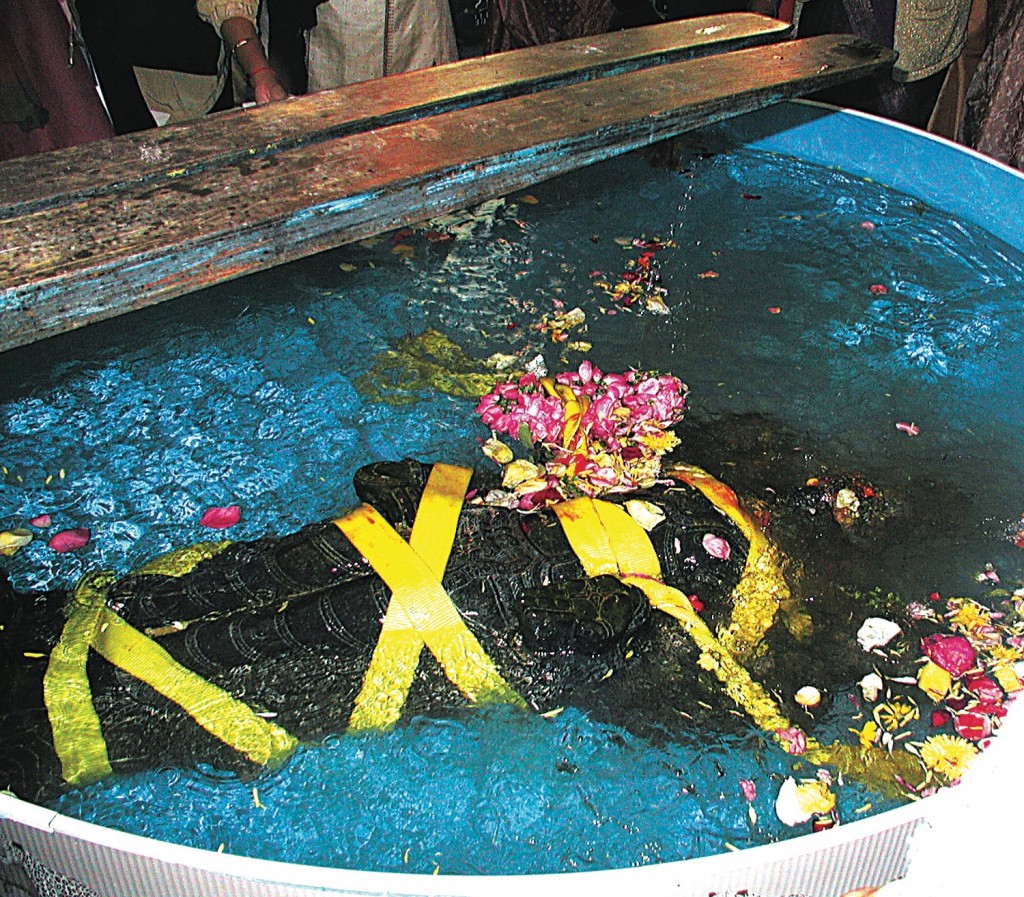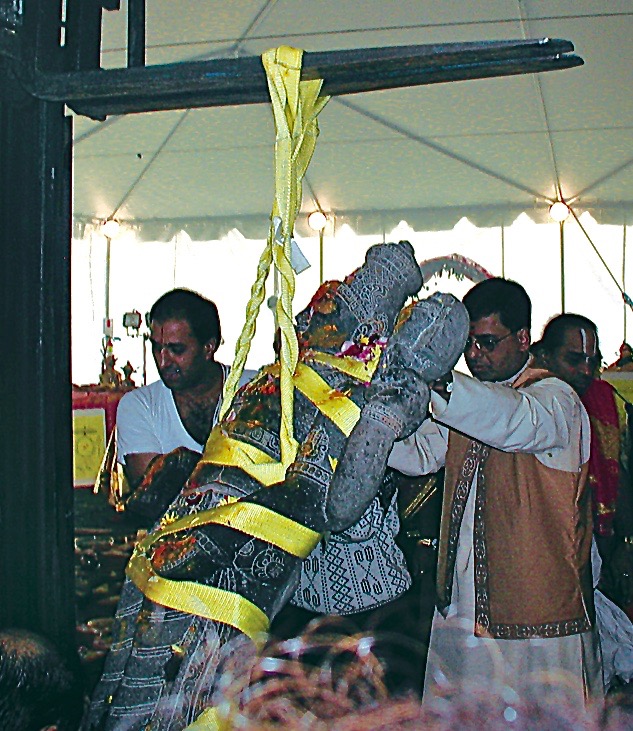
Within Hinduism there are special ceremonies where sacred images are formally installed in temples. These installation ceremonies are generally given two names: Murti Sthapana and Prana Pratishta. The word murti means sacred image and “sthapana” means “placing,” and so the murti sthapana ceremony is the “placing of the sacred image.” The other term, Prana Pratishta is a little less common, but is still prevalent. “Prana” means “breath” and “pratishta” means “establishing,” and so the Prana Pratishta ceremony is literally “establishing the breath” within the sacred image. In other words, it is bringing the sacred image to life. Instead of repeating both terms, I will just use the term Murti Sthapana to mean both. The Murti Sthapana ceremony is fairly common in the West at the present time because there is a renaissance of Hinduism taking place as many new temples are being established. In another generation or so such ceremonies will likely become less common. In temples the ceremonies are generally elaborate and may last for many days and include many priests. Such ceremonies include immersing the sacred image in water, rice, and flowers; bathing the sacred image in milk, yogurt, clarified butter (ghee) and other sacred substances, and performing many havans/homas and pujas. Generally, a Murti Sthapana ceremony is not performed in private homes, or if it is, the ceremony is much simpler.

There are two ways to understand the Murti Sthapana ceremony. The first is as a contract. An agreement is established between the Deity and a temple congregation: the Deity agrees to “descend” into the sacred image, and the congregation agrees to care for the Deity in the form of service, seva. The ceremony is literally the bringing and awakening of the Deity within the stone or metal image. The other view is more theological. By definition God is all-pervading and omni-present and so the idea of establishing the breath of the Deity within an image is impossible, God is already there! The purpose of the ceremony is not to establish the Deity within the image, but to awaken the mind of the participates, through the power of ritual, to the presence of divinity within the sacred image. At the beginning of the ceremony people see only stone or metal, but at the end they see God! The real installation takes place not in the stone or metal image, but in the minds and hearts of the participants. This is the power of ritual. The culmination of such a ceremony is when the “eyes” of the image are actually opened. In some instances, a sculptor will chip away at the eyes of the image and “open” them up. More commonly, a chief guest will be invited to remove a covering from the eyes of the image with a golden coin or similar object. The first thing the newly infused Deity will see is an image of Him or Herself as a mirror is held before the newly “awakened” image.